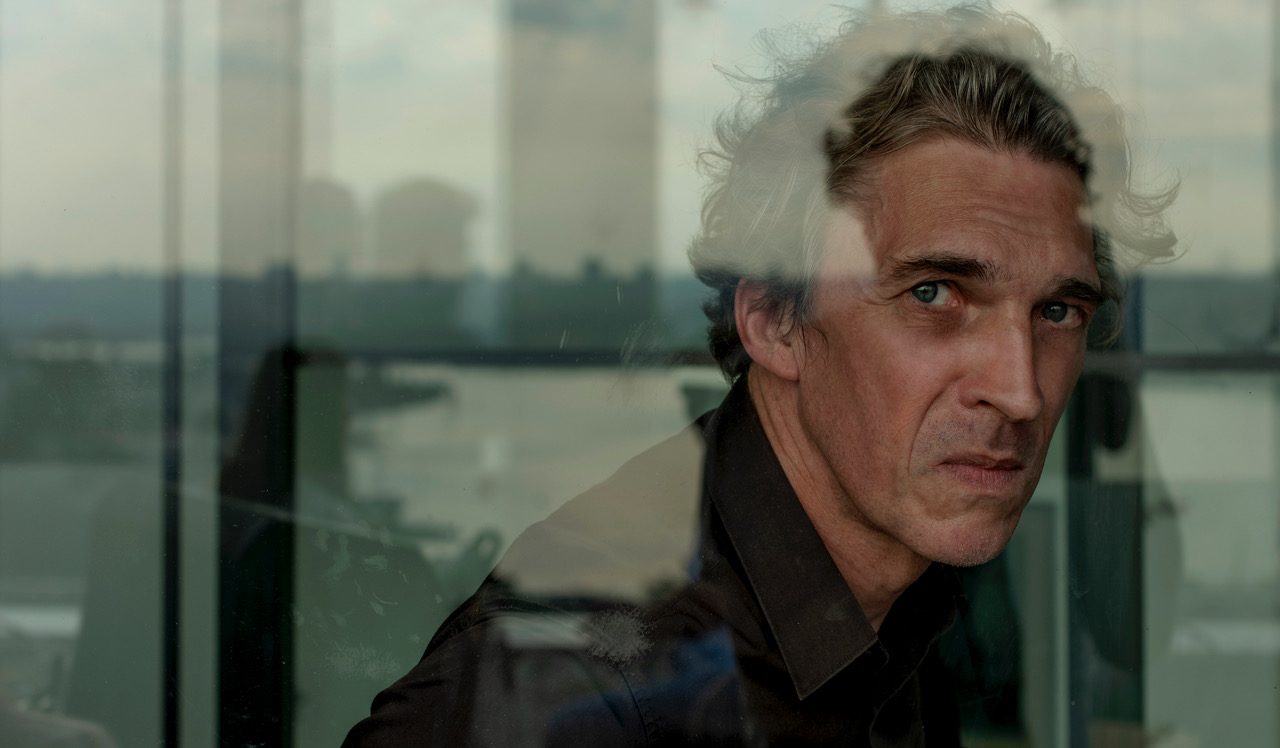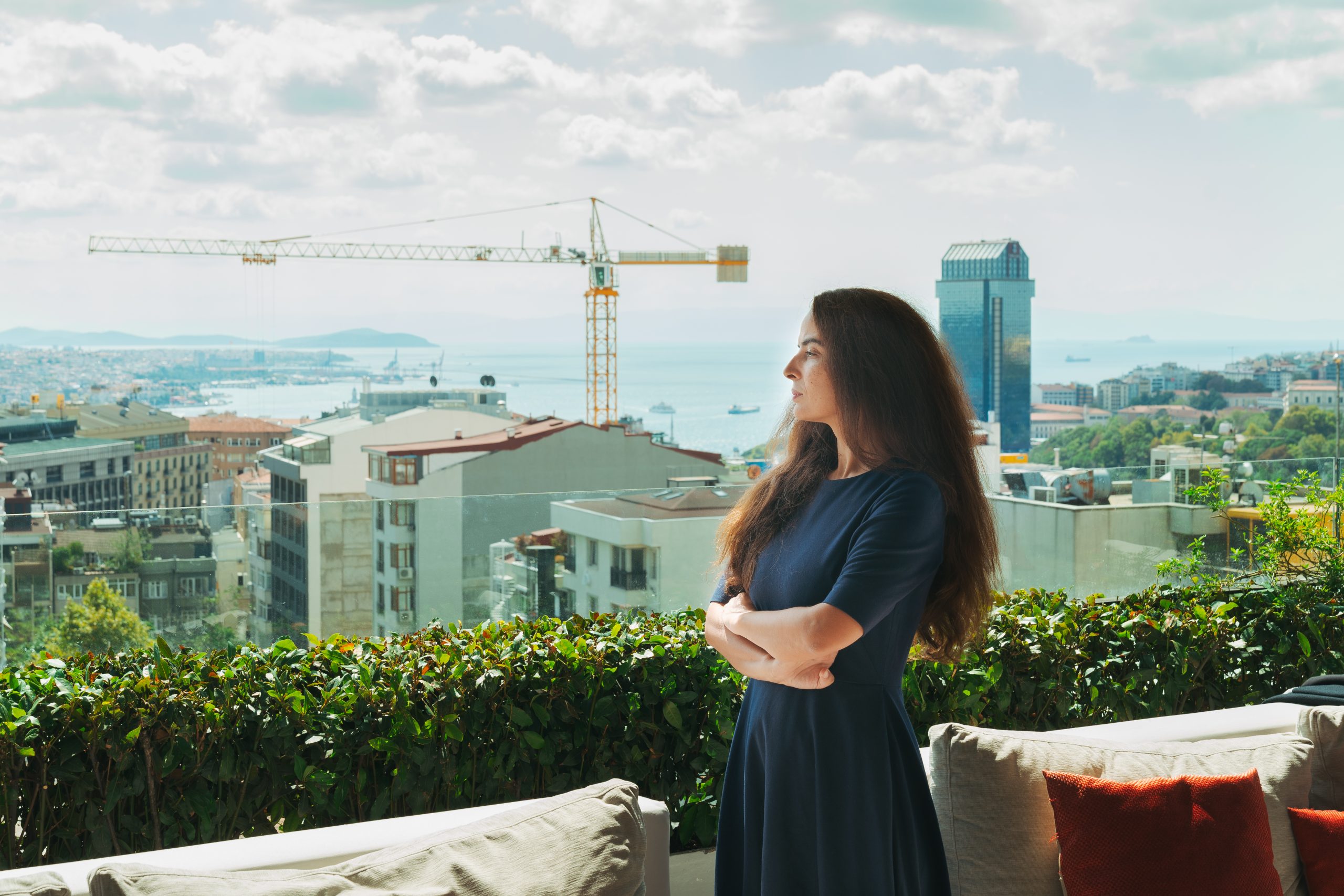Nicolas Bouirrad argues the Seventh Continent “shows today’s artistic production as a multiverse, an archipelago of differences, away from normative continents and massive entities.” And he adds that it defines art as a molecular anthropology, which studies the human effects, tracks and prints in the universe, and their interaction with non-humans.
So, Let’s start with the theme of the Biennial – “The Seventh Continent.” The theme refers to a continent where “humans and non-humans, our mass-productive systems and natural elements, drift together, reduced to particles of waste.” The theme is just so right on spot. I was at the Aegean coast; last week. . I’ve been going to the same sea side resort since I was seven years old and it is extremely upsetting to witness such a dramatic increase in waste production – crystal clear waters getting dirtier by the day, beaches full of plastic and waste…
It is all happening very, very fast.
The change is immense and we are not even talking about the last century.
Like the last 50 years.
Tell me how and when you started engaging with this theme
I’ve always been pretty sensitive to this matter, but working on the concept of the Anthropocene led me to explore it more within artistic spheres. I started working on this in 2012 – 2013 and curated the Taipei Biennial in 2014, which was titled “The Great Acceleration.” That Biennial showed how contemporary art expresses a new contract among human beings, animals, plants, machines, products and objects. That was the first known exhibition about it; the Istanbul Biennial is based more upon the anthropological sciences. The Taipei exhibition was more of a general presentation, an introduction. I didn’t know then that I would continue working on this, but back then it was more of a general presentation of this new space that the Anthropocene is actually provoking, which is the collapse of the different spheres and hierarchies between the human and the non-human. So it was a small practice that became much more precise. I wanted to start with a strong image, which the Seventh Continent is – an image that haunts us, a strong image that people know very well. The Istanbul Biennial is not an exhibition with a specific concept, but a presentation of a bunch of ideas all gathered around this image of the Seventh Continent.
Why do you think the idea of a Seventh Continent commands such strong attention?
Because it is a territory as big as India, more or less, and five times the size of Turkey. So a very big territory. It is like the shadow of our activity in the last century. A very concrete image. To me, this is a new territory that is an obvious counter space for colonization. In the 15th century, Europeans began conquering what they called the New World, inhabiting colonies and massacring its people. So the new Seventh Continent is, in a way the real New World, being created by the industrial activities that we have led since. But this is a territory nobody wants to get in to; nobody wants to live in the Seventh Continent. It is like our subconscious in a way. The subconscious of the ruling human system.
I am reminded of Joseph Conrad’s Heart of Darkness and the horrors of colonization, that level of human savagery. And correct me if I am wrong, but talking about the theme of the Biennial, it seems to me that as humans, we have not only colonized human populations but also other living beings like animals and plants and all, don’t you think?
Most religious texts actually say that the human being is to master and conquer nature. Nature is actually considered to be nothing more than an environment, a background, for the use of human beings – which is exactly what is collapsing.
Should we not be talking about this every day? There is the fact that land covering a space five times the size of Turkey is basically debris, but this is not in the headlines. Instead we are preoccupied with politics, economics and celebrity gossip. Don’t you find it tragic that something that requires such constant and immediate attention is not as widely discussed?
Of course people have to be talking about this because it’s global, and huge. I call it the Anthropocene murders. The more our activities as humans negatively affect the planet, the less we seem to care. That’s what I refer to as “murder”. As the human species, we have proven that we are able to completely change the surface of this planet, and contemporary art can actually represent this in a very interesting way. This is a crisis on a very big scale; the human scale as we have known it for the past 2000 years has completely changed. The artists in the Biennial are expressing this in their work. What the artists are trying to point out is that the world is collapsing and that we cannot survive much longer. They are trying to demonstrate the collapse of these traditional and ideological hierarchies between humans and the non-humans, between matter and everything else, toppled by the Anthropocene.
What are you referring to when talking about traditional and ideological hierarchies between humans and non-humans?
It is the division of nature and culture into two totally separate entities. From this division of nature and culture comes other divisions. Like women and men. Women are actually supposed to be on the side of nature in most religious texts. Think of colonization… why did the Europeans colonize? Because the people they were colonizing were supposed to be on the side of nature. The colonizers claimed to be bringing progress between continents. That’s what I mean. This division between nature and culture leaves nature on the side of something that has to be colonized and tamed; it’s the matrix of all subordinations, the mother of all oppressions. Including of course capitalist hierarchies between the rich and the poor. It’s kind of the basic matrix of segregations.

Talking about segregation, can you comment on the rise of right-wing political movements around the world?
It is connected with an obsession with destroying the Amazon. Fascism serves up an idea as a reason to oppress others – and that idea is that some human beings are more civilized than others and will bring civilization to the Amazon.
What has been done to indigenous people all around the world is a good example. Why do you think human beings consider nature as something to be tamed rather than something to coexist with, or be a part of? Why do you think we feel the need to exploit animals and plants?
I think the first religions considered the foremost sacred activities to be based upon the worship of the dead, and burial. There was also a very pantheist vision of the world – where animals are closer to God. Religions with goddesses celebrate the adoration of life in itself. Monotheistic religions, on the other hand, have different visions. I firmly believe that one of the major reasons for this oppression is patriarchal.
How?
All monotheistic religions are patriarchal. We are led to believe there is a father in the sky, not a mother.
So you could argue that God is a male in all monotheistic religions.
In all of them except for prehistoric religions.
Do you think that civilization has collapsed, and that we, as humans have failed?
Collapsing might not be the best word here, but we are declining, and probably in very diverse and catastrophic ways.
You mentioned the prehistoric and monotheistic religions – wherein prehistoric religions considered anything living or non-living as sacred whereas it can be argued the monotheistic do not. We celebrated the Islamic Feast of the Sacrifice not too long ago. Can you comment on the sacrificial use of animals within the context of the Seventh Continent?
We can look at the current attitude of most Amazonian tribes and the people in South America, where there is a much more complex relationship between the human and the animal. Humans hunt the animals, but the way the animal is actually killed is through a complex system of co-translations, very symbolic, and a matter of organization. There is a very complex relationship between the human and the forest that is capitalist in nature, based on human knowledge.
Istanbul’s new third airport is located along one of the most prominent migration routes for birds, experts say. They warn that the airport poses dangers not only for the environment, but even for flights.
I think this is a demonstration of pure ignorance, selfishness, authoritarianism and short-term thinking in doing business.
Do you think that we as humans hold this belief that we own the planet and therefore can do anything we want with its resources?
Yes, absolutely. Forty percent of existing animal species have gone extinct in the past 20 years. It’s terrifying.
Are you anxious about the state we are in as human beings?
Yes but I am not an activist. My goal is to work on developing a deeper understanding of things. And I think that’s what art is about; it’s not about militancy or activism. It’s something else but just as important.
You mentioned at the press conference that the artists participating in the Biennial are like anthropologists in a way, can you elaborate on that?
First, the idea was that if there is this new territory and the Seventh Continent is one big one, somebody has to look into the anthropology of it. And what I’m interested in is exploring the new trends that are coming up in anthropology. Anthropologists like Professor Phillipe Descola or Eduardo Viveiros de Castro have actually expanded anthropology into the system of relationships between humans and non-humans – a science not just based upon ‘anthrōpos’ as a species but the human species in their relationship to animals. So that’s the kind of anthropology I’m interested in exploring for the exhibition. And so, in a way, I’m asking the artist, I’m showing the artist, the way anthropologists see and perceive the world. They are helping us discover the aspects of this world that are not visible, raising questions that have not been raised before… and inventing the aesthetics that go with it.
Should artists come up with solutions?
Artists cannot provide solutions. That is up to politicians and activists. It is for the artist to consider that same landscape but with a different eye. They almost have a different glance. It would be a catastrophe if only artists could provide solutions today. A big, big catastrophe…
I’m not expecting artists to come up with solutions but to bring the right questions and make us think in different ways. The main question I tried to address throughout the series of exhibitions starting from “The Great Acceleration” is, what effect, what impact the Anthropocene has had on the way we see, and stand in, and how we represent the world.
What did you think when the curatorial position of the Istanbul Biennial was offered to you?
I got very excited. It’s important because it’s the first time that the Istanbul Biennial has made a statement about environmental values. It’s a historical journey, because it’s not something I have heard being done in the past 30 years.
Is this your first time in Istanbul?
I’ve seen all the biennials here since 1999 actually. I just missed the two last ones for a number of reasons. But I’ve seen all the other ones. I consider the Istanbul Biennial to be the second best in the world, after Venice. Historically, and in terms of content. And to follow, I would name the Sao Paolo, Shanghai and Taipei Biennials.

As you might be well aware, Istanbul has recently undergone a period of regression in its arts and culture scene. But now it looks like that’s changing…what do you think?
I think a lot of people are coming back to Istanbul for the first time in years….even I had not been here since 2013.
Are there books or movies you would recommend for children visiting this year’s Biennial? To get a better understanding.
The kids should watch Wall-E, for sure.
And adults?
For the adults I would have to say to read the book “Beyond Nature and Culture” by Philippe Descola. It’s been translated into many languages.
What does Istanbul represent, for you?
Istanbul’s dynamism in particular is very impressive to me.
I am not an activist. My goal is to work on developing a deeper understanding of things. And I think that’s what art is about; it’s not about militancy or activism. It’s something else but just as important.








